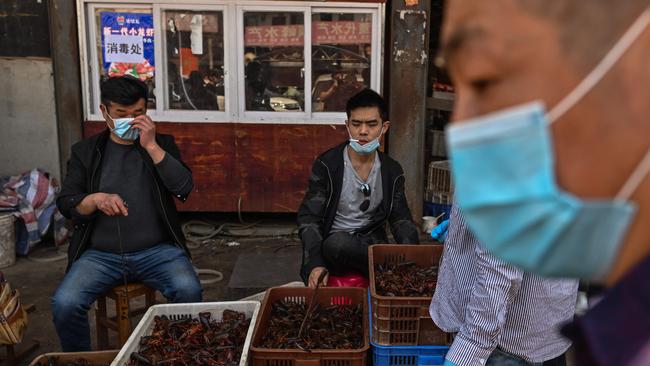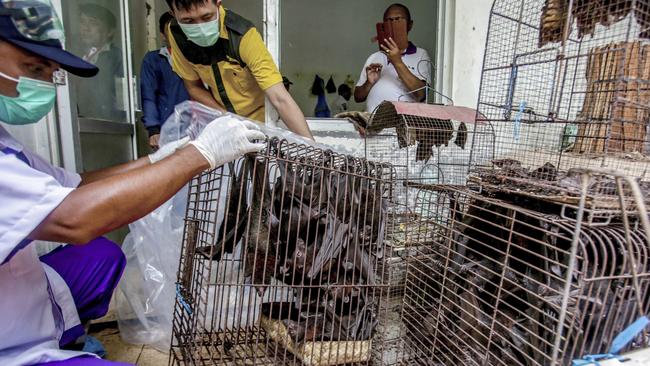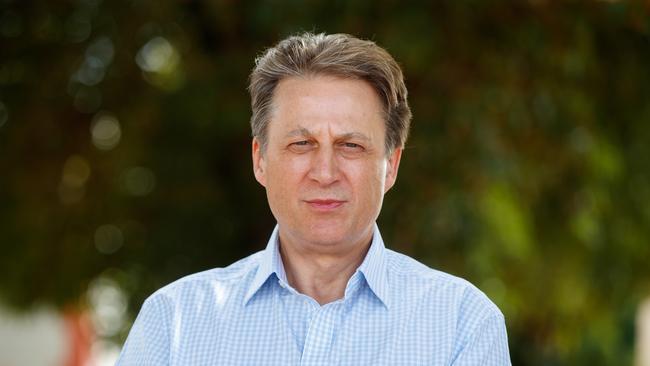Flinders University Professor Nikolai Petrovsky open to theory of coronavirus lab origin
An Adelaide scientist says it is a possibility that an animal was infected by two different types of coronavirus and that COVID-19 was the result of a mutation.
The coronavirus that has become a worldwide pandemic may have been created in a “cell-culture experiment” in a laboratory, according to prominent scientists who have conducted groundbreaking research into the origins of the virus.
Flinders University Professor Nikolai Petrovsky’s has completed a scientific study, currently undergoing peer review, in conjunction with LaTrobe University in Victoria, which found COVID-19 was uniquely adapted for transmission to humans, far more than any other animal, including bats.
Professor Petrovsky, from the College of Medicine and Public Health at Flinders University who has spent the past 20 years developing vaccines against pandemic influenza, Ebola and animal SARS, said this highly unusual finding left open the possibility that the virus leaked from a laboratory.

MORE NEWS
How China is taking strategic advantage of pandemic
China is ‘cashing in on coronavirus chaos’: US envoy
How the Red Army oversaw COVID-19 research
“The two possibilities which I think are both still open is that it was a chance transmission of a virus from an as yet unidentified animal to human. The other possibility is that it was an accidental release of the virus from a laboratory,” he said.
“Certainly we can’t exclude the possibility that this came from a laboratory experiment rather than from an animal. They are both open possibilities.”
Professor Petrovsky, who is the Chairman and Research Director of Vaxine Pty Ltd, said COVID-19 has genetic elements similar to bat coronaviruses as well as other coronaviruses.
The way coronavirus enters human cells is by binding to a protein on the surface of lung-cells called ACE2. The study showed the virus bound more tightly to human-ACE2 than to any of the other animals they tested.

“It was like it was designed to infect humans,” he said.
“One of the possibilities is that an animal host was infected by two coronaviruses at the same time and COVID-19 is the progeny of that interaction between the two viruses.
“The same process can happen in a petri dish. If you have cells in culture and you have human cells in that culture which the viruses are infecting, then if there are two viruses in that dish, they can swap genetic information and you can accidentally or deliberately create a whole third new virus out of that system.
“In other words COVID-19 could have been created from that recombination event in an animal host or it could have occurred in a cell-culture experiment.”
Professor Petrovsky was originally modelling the virus in January to prepare a vaccine candidate.
He then turned his attention to “explore what animal species might have been involved in the transmission to humans” to understand the origins of the virus - and had a “surprising” result when none were well-adapted.
“We found that the COVID-19 virus was particularly well-adapted to bind to human cells and that was far superior to its ability to bind to the cells of any other animal species which is quite unusual because typically when a virus is well-adapted to an animal and then it by chance crosses to a human, typically, you would expect it to have lower-binding to human cells than to the original host animal. We found the opposite so that was a big surprise,” he said.

The study, a collaboration between Flinders University and LaTrobe University, titled “In Silico comparison of spike protein-ACE2 binding affinities across species; significance for the possible origin of SARS-CoV-2 virus”, is awaiting peer-review.
Scientists worldwide have, to date, have overwhelmingly said the virus was more likely originated in a wet market and was not created in a laboratory.
Even the United States Office of National Intelligence ruled out COVID-19 being created in a laboratory.
Asked why scientists have had this view, Professor Petrovsky said scientists “try not to be political” and do not want their research impacted adversely by tighter laboratory controls.

“We just try to base our findings on facts rather than taking particular political positions but sometimes obviously the alternatives may have unintended consequences,” he said.
“For instance, if it was to turn out that this virus may have come about because of an accidental lab release that would have implications for how we do viral research in laboratories all around the world which could make doing research much harder.
“So I think the inclination of virus researchers would be to presume that it came from an animal until proven otherwise because that would have less ramifications for how we are able to do research in the future. The alternative obviously has quite major implications for science and science on viruses, not just obviously political ramifications which we’re all well aware of.”

Professor Petrovsky said an inquiry needs to start straight away, not when the pandemic is finished.
“The idea of putting it off to the pandemic is over, it would be a mistake,” he said.
“I’m certainly very much in favour of a scientific investigation. It’s only objective should be to get to the bottom of how did this pandemic happen and how do we prevent a future pandemic…. not to have a witch-hunt.”
